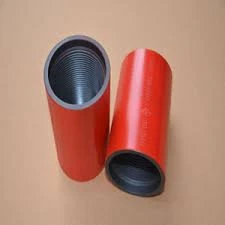- Afrikaans
- Albanian
- Amharic
- Arabic
- Armenian
- Azerbaijani
- Basque
- Belarusian
- Bengali
- Bosnian
- Bulgarian
- Catalan
- Cebuano
- Corsican
- Croatian
- Czech
- Danish
- Dutch
- English
- Esperanto
- Estonian
- Finnish
- French
- Frisian
- Galician
- Georgian
- German
- Greek
- Gujarati
- Haitian Creole
- hausa
- hawaiian
- Hebrew
- Hindi
- Miao
- Hungarian
- Icelandic
- igbo
- Indonesian
- irish
- Italian
- Japanese
- Javanese
- Kannada
- kazakh
- Khmer
- Rwandese
- Korean
- Kurdish
- Kyrgyz
- Lao
- Latin
- Latvian
- Lithuanian
- Luxembourgish
- Macedonian
- Malgashi
- Malay
- Malayalam
- Maltese
- Maori
- Marathi
- Mongolian
- Myanmar
- Nepali
- Norwegian
- Norwegian
- Occitan
- Pashto
- Persian
- Polish
- Portuguese
- Punjabi
- Romanian
- Russian
- Samoan
- Scottish Gaelic
- Serbian
- Sesotho
- Shona
- Sindhi
- Sinhala
- Slovak
- Slovenian
- Somali
- Spanish
- Sundanese
- Swahili
- Swedish
- Tagalog
- Tajik
- Tamil
- Tatar
- Telugu
- Thai
- Turkish
- Turkmen
- Ukrainian
- Urdu
- Uighur
- Uzbek
- Vietnamese
- Welsh
- Bantu
- Yiddish
- Yoruba
- Zulu
api 5ct tubing coupling
Understanding API 5CT Tubing Couplings
In the oil and gas industry, one of the critical components that ensure the efficient extraction and transportation of hydrocarbons is the tubing system, which is designed to support the flow of oil and gas from underground reservoirs to the surface. Among various components of the tubing system, API 5CT tubing couplings play a significant role in connecting segments of tubing and maintaining the integrity of the system.
Understanding API 5CT Tubing Couplings
A tubing coupling is essentially a short pipe that connects two sections of tubing. While it may seem like a simple component, it performs several essential functions. First, it facilitates the quick and efficient assembly of the tubing string, allowing for easier installation and maintenance. Second, it helps to maintain the strength of the tubing system without introducing weak points in the joint. This attribute is crucial for preventing blowouts or leaks, which can lead to costly environmental damage and operational downtime.
api 5ct tubing coupling

The design of API 5CT tubing couplings includes several types, among which are the non-upset and upset couplings. Non-upset couplings have the same outside diameter as the tubing pipe, making them suitable for applications where uniformity in diameter is needed. On the other hand, upset couplings are designed with a larger diameter at the ends, providing increased wall thickness, which enhances strength at the joint. This is particularly beneficial in high-pressure or corrosive environments.
Additionally, couplings are subject to various quality control measures and testing to ensure they can withstand the demanding conditions of oil and gas extraction. These include tensile tests, impact tests, and corrosion resistance tests. Manufacturers must adhere to strict guidelines established by the API to guarantee that their couplings can perform reliably over time, thereby minimizing the risk of failures that could result in significant financial losses.
Another factor to consider is the regulatory and standards compliance associated with API 5CT tubing and couplings. Compliance with these standards not only ensures the safety and reliability of operations but also facilitates international trade and procurement. Many countries require adherence to API standards for imported oilfield equipment, making it vital for manufacturers to maintain high-quality production processes.
In conclusion, API 5CT tubing couplings are integral to the oil and natural gas industry's infrastructure. Their role in ensuring the structural integrity of tubing systems cannot be overstated. By connecting different sections of tubing and maintaining operational efficiency, these couplings contribute significantly to the overall safety and efficiency of hydrocarbon extraction processes. Understanding their design and functionality provides invaluable insights into the complexities of the oil and gas industry.
-
Tubing Pup Joints: Essential Components for Oil and Gas OperationsNewsJul.10,2025
-
Pup Joints: Essential Components for Reliable Drilling OperationsNewsJul.10,2025
-
Pipe Couplings: Connecting Your World EfficientlyNewsJul.10,2025
-
Mastering Oilfield Operations with Quality Tubing and CasingNewsJul.10,2025
-
High-Quality Casing Couplings for Every NeedNewsJul.10,2025
-
Boost Your Drilling Efficiency with Premium Crossover Tools & Seating NipplesNewsJul.10,2025







